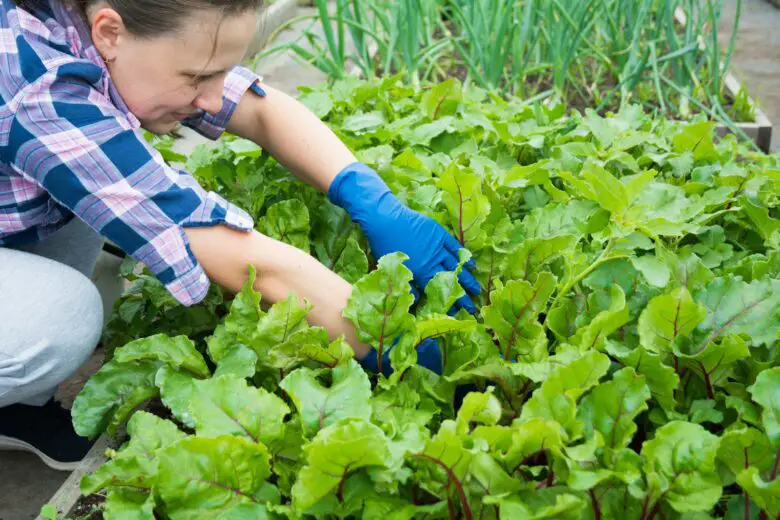The act of selling seeds has a rich history in agriculture. From ancient civilizations to modern times, the trade of seeds has played a vital role in shaping our food sources and ecosystems. Today, selling seeds is not just a transaction; it’s a gateway to sustainable farming practices, biodiversity preservation, and global food security. Join us as we delve into the fascinating world of selling seeds, exploring its significance and impact on our daily lives.
Starting Your Seed Business
Research Market
Research the market demand for specific seeds by analyzing trends and customer preferences. Identify popular varieties and niche markets to target effectively.
Business Plan
Create a business plan outlining your goals, strategies, and financial projections. Include details on seed sourcing, marketing tactics, and distribution channels.
Reliable Suppliers
Establish relationships with reliable seed suppliers to ensure quality products for your customers. Conduct thorough background checks and negotiate favorable terms for long-term partnerships.

Understanding Local Licensing for Seeds
Familiarize: Regulations
Local seed sale regulations vary by region, and it is crucial to familiarize yourself with the specific rules in your area. Understand the restrictions and requirements set by the local authorities.
Ensure you are aware of any zoning laws that may impact where you can sell your seeds. Some areas may have restrictions on selling seeds from residential properties.
Obtain: Permits and Licenses
To legally sell seeds, you must obtain all necessary permits and licenses from your local government. This may include a general business license and a specific seed-selling permit.
Contact your local agricultural department or relevant authority to inquire about the specific permits needed for selling seeds. Failure to obtain the proper licenses can result in fines or legal consequences.
Comply: Labeling and Packaging
Complying with labeling and packaging requirements is essential when selling seeds. Ensure that each packet of seeds is clearly labeled with important information such as seed type, planting instructions, and any relevant disclaimers.
Packaging should be secure and protective to maintain seed viability during storage and transport. Consider using environmentally friendly packaging options to appeal to eco-conscious customers.
Choosing the Right Seeds for Sale
Climate Suitability
Consider the climate suitability of the seeds you plan to sell. Different plants thrive in various climates, so choose seeds suitable for your region’s weather conditions. This will ensure higher success rates for your customers.
Seed Quality
Select high-quality, non-GMO seeds to guarantee healthy and robust plants for your customers. High-quality seeds result in better yields and customer satisfaction, increasing the likelihood of repeat orders.
Diverse Seed Range
To attract a wider customer base, offer various seeds, including popular options like peppers. Providing a variety of seeds caters to different gardening preferences and increases the chances of receiving bulk orders.
Cultivating Healthy Seed Plants
Optimal Conditions
To cultivate healthy seed plants, ensure they receive adequate sunlight, typically 6-8 hours daily. Maintain the temperature between 65-75°F for optimal growth.
Properly prepare the planting plan by selecting a well-draining pot and using high-quality, nutrient-rich soil. Different species may require specific soil types.
Pest and Disease Monitoring
Regularly inspect plants for pests like aphids or diseases like powdery mildew. Address any issues promptly to prevent them from spreading to other produce.
Implement natural pest control methods, such as introducing beneficial insects or using organic pesticides. Attend workshops to learn about sustainable pest management practices.
Watering and Fertilization Techniques
Water seeds consistently, ensuring the soil remains moist but not waterlogged. Adjust watering frequency based on plant needs and environmental conditions.
Fertilize plants with a balanced fertilizer according to the recommended dosage. Over-fertilization can harm the seed plants, so follow guidelines carefully.
Harvesting and Storing Seeds Correctly
Harvesting Seeds
Harvest seeds at the right maturity stage to ensure optimal germination rates. Wait until seeds are fully developed on the plant before collecting them. Proper timing is crucial for seed viability.
Collect supplies such as paper bags or envelopes for storing seeds. These materials allow for air circulation, preventing moisture buildup that can lead to mold growth. Label each container with the seed type and harvest date.
Storing Seeds
To prevent mold and mildew, dry seeds thoroughly before storage. Spread seeds in a single layer on a tray or screen in a well-ventilated area. Stir the seeds occasionally to ensure even drying.
To maintain viability, store seeds in a cool, dry place. Optimal conditions include low humidity levels and consistent temperatures. Avoid storing seeds in areas prone to temperature fluctuations or high humidity.
Remember, proper harvesting and storage techniques are essential for preserving seed quality and ensuring successful future plantings.

Direct Sales vs. Selling to Companies
Pros and Cons
Direct Sales:
- Pros:
- Establishing a direct connection with customers can lead to higher profit margins.
- Flexibility in pricing and marketing strategies tailored to individual buyers’ needs.
- Cons:
- It requires significant time and effort to market and manage customer relationships.
- Limited reach compared to selling in bulk to companies.
Partnerships with Gardening Stores or Nurseries
Partnering with local gardening stores or nurseries can offer several advantages:
- Access to an established customer base seeking quality seeds.
- Reduced marketing efforts as stores promote products to their clientele.
- Potential for bulk sales, ensuring a steady income stream.
Online Platforms for Wider Reach
Utilizing online platforms such as e-commerce websites or social media can significantly expand the reach of seed sales:
- Tap into a global market, reaching customers beyond local boundaries.
- Cost-effective marketing through targeted ads and promotions.
- Convenient payment options and seamless order processing enhance customer experience.
Enhancing Earnings with Garden-Related Activities
Workshops
Offer gardening workshops to share knowledge and skills with others. These sessions can cover topics like seed selection, planting techniques, and pest management. Participants can pay a fee to attend, providing an additional source of income.
Collaborate with local nurseries or gardening centers to host these workshops. By partnering with established businesses, you can reach a wider audience and benefit from their existing customer base. This collaboration can also lead to future opportunities for cross-promotion and joint events.
Seed-Starting Kits
Create seed-starting kits tailored for beginners who want to start gardening. These kits can include essential items such as seeds, soil, pots, and planting instructions. Sell these kits online or at local markets to generate extra produce.
Develop instructional videos or written guides to accompany the kits. Providing educational resources will enhance the value of your product and attract more customers interested in learning about gardening. Consider offering bundle deals that include both the kit and access to online coaching sessions.
Balancing Gardening with Other Responsibilities
Prioritizing Tasks
When juggling gardening as a side hustle alongside other commitments, it’s crucial to prioritize tasks based on their importance and deadlines. By focusing on urgent matters first, such as watering plants or tending to seedlings, you ensure essential activities are completed promptly.
Delegating Responsibilities
To effectively manage your time, consider delegating responsibilities when necessary. Whether it’s assigning family members tasks in the garden or hiring help for specific farmer duties, sharing the workload can lighten your burden and allow you to focus on crucial aspects of your gardening venture.
Setting Realistic Goals
Setting realistic goals and schedules is key to balancing gardening with a full-time job or other obligations. Establish achievable milestones for planting, harvesting, and maintaining your garden. By breaking down tasks into manageable steps and allocating dedicated times during the week, you can efficiently utilize even the little time you have available.
Final Remarks
You’ve learned the essentials of starting a seed business, from understanding licensing to harvesting and selling. Focusing on quality seeds, proper cultivation, and strategic sales approaches will set you up for success. Balancing your gardening passion with other commitments can boost your earnings further. Remember, direct sales offer a personal touch, while selling to companies may scale your business. Enhancing revenue through garden-related activities is a smart move. Now, take action and turn your seed-selling dream into a thriving reality.
Frequently Asked Questions
How can I start a seed business?
To start a seed business, research local licensing requirements, choose the right seeds to sell, cultivate healthy seed plants, harvest and store seeds correctly, decide between direct sales or selling to companies, and consider garden-related activities to enhance earnings.
What are the benefits of selling seeds directly to customers?
Selling seeds directly to customers allows you to build relationships, receive immediate product feedback, offer personalized service, and potentially earn higher profits than selling to companies.
How do I ensure the quality of the seeds for sale?
To ensure seed quality, source from reputable suppliers or grow your own seeds using best practices. Regularly test germination rates, store seeds in optimal conditions, and provide accurate information about planting instructions for customer satisfaction.
Is it possible to balance gardening with other responsibilities while running a seed business?
Yes, balancing gardening with other responsibilities is achievable by creating a schedule that allocates time for essential tasks such as planting, harvesting, and customer interactions. To streamline processes efficiently, utilize tools like automation and delegation.
What are some effective ways to increase earnings through garden-related activities?
You can increase earnings by offering gardening workshops or classes, providing consulting services for garden design or maintenance, hosting events like plant sales or farm-to-table dinners, collaborating with local businesses for cross-promotion, and marketing your seed business through social media.















Leave a Reply